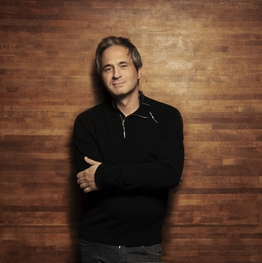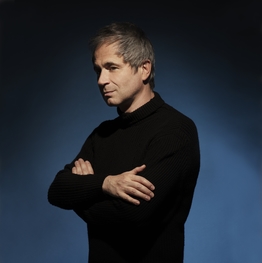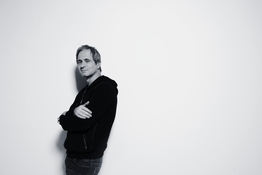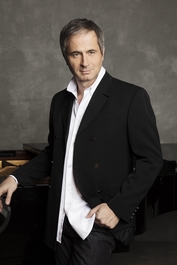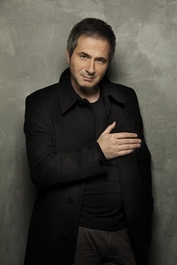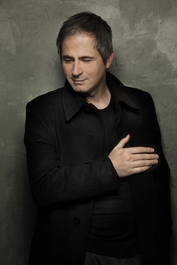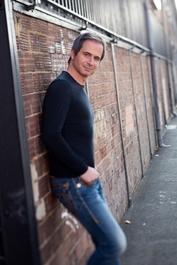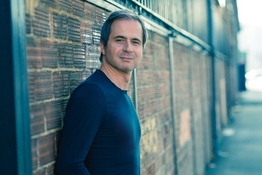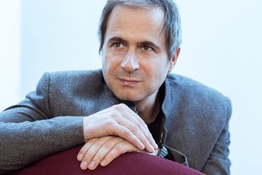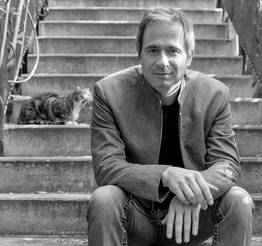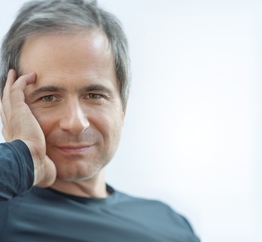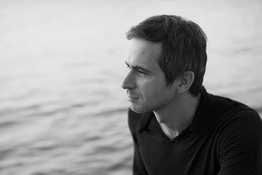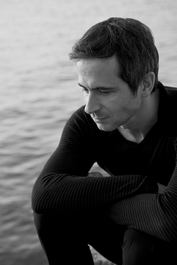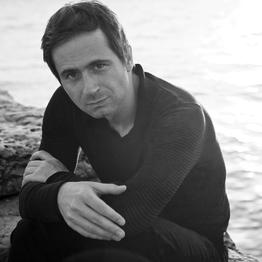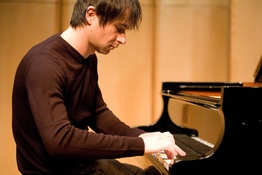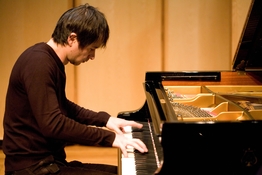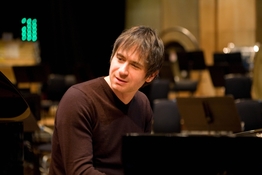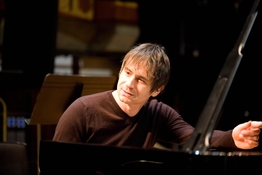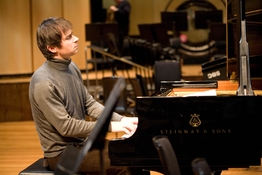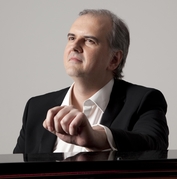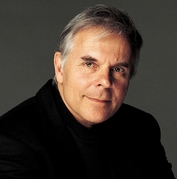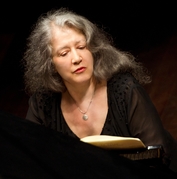Piotr Anderszewski
News
Fantaisies: a note from Piotr Anderszewski about his new album
"There are some formal reasons for coupling these works by Mozart and Schumann on one album. Doing so encompasses Fantaisies by both composers, large three-movement forms, the Mozart Sonata and the Schumann Fantaisie (which could be perceived as a grand Romantic sonata), and there is also the tonality connection, in oscillation between C minor, E flat major and C major. But behind these more salient links there is, for me, a deeper connection between the music of the two composers.
"It has always fascinated me how a composer’s inspiration materialises as a musical score. By what process can a musical thought be written down without losing the spirit of its initial impulse? We know how fast and flawlessly Mozart wrote. He seemed to have the entire piece, with its every detail, in his head — whether a small minuet or a whole symphony — and would then write it down, seemingly without hesitation. Schumann’s process was possibly slightly different, more methodical. But when one reads how fast Schumann actually wrote, how unbelievably quickly some of his large-scale, complicated piano pieces were composed, one can’t help but draw a similarity here with Mozart: music that was in his head flowed unimpeded onto the paper, seemingly without his holding back.
"In the case of Mozart his inspiration, his knowledge of the instrument, his compositional technique, all seem to coexist in some perfect balance, and the achievement of that balance feels miraculously effortless. In the case of Schumann things are less even, less consistent; one feels a much more troubled soul behind his creations. But even in his more awkward pieces the sincerity of intention, the initial impulse, is never compromised. He does not try to correct that impulse — even if imperfect — and that awkwardness, if approached with care and love by the interpreter, can become extremely touching, vulnerable, human.
"I can hear in the music of both composers a similarity in their processes of giving physical form to their musical ideas. The cruel resistance of the blank page feels, in both cases, inexistent, disregarded. And therein lies for me an important, precious connection between Mozart and Schumann: an unobstructed directness to their music, in which the purity of intention remains intact." -Piotr Anderszewski. The new album, Fantaisies, is out now.
Piotr Anderszewski's long-awaited new album 'Fantaisies' is out now
The release of any recording by the pianist Piotr Anderszewski constitutes something of a special occasion. As the Scottish newspaper The Herald wrote: “In music as in life, Anderszewski is a man who takes his decision-making seriously. His recitals are intense and wonderful: he is a profound communicator, a meticulous craftsman, a deeply original interpreter. He infuses every gesture with tremendous care; no phrase is thrown away, no nuance without meaning. The process of putting together such acutely considered performances is painstaking and lengthy … which goes some way to explaining why his repertoire includes just a handful of core composers.”
Two of the composers closest to Anderszewski’s heart, Mozart and Schumann, are the focus of his new recital album, Fantaisies, recorded in Warsaw. “I can hear in the music of both composers a similarity in their processes of giving physical form to their inspirations,” he says. “The cruel resistance of the blank page feels, in both cases, inexistent, ignored. And therein lies an important, precious connection between Mozart and Schumann: an unobstructed directness to their music, in which the purity of intention remains intact … In the case of Mozart his inspiration, his knowledge of the instrument, his compositional technique, all seem to coexist in some perfect balance, and the achievement of that balance feels miraculously effortless. In the case of Schumann things are less even, less consistent; one feels a much more troubled soul behind his creations. But even in his more awkward pieces the sincerity of intention, the initial impulse is never compromised.”
The two Mozart pieces, the Fantasia in C minor K475 and the Piano Sonata No. 14 in C minor K457, date from 1784-85, a time when Mozart, nearing the age of 30, was enjoying great success in Vienna, but both are dark, intense works. The two Schumann pieces, the Fantasie in C major and the Theme and Variations in E flat known as the ‘Geistervariationen’ (Ghost Variations) were composed some 18 years apart. The former was written in 1836, and constitutes a passionate expression of both Schumann’s love for Clara Wieck and his anguish at being kept separated from her by her father. The latter dates from 1854 and was Schumann’s final composition, written two years after the suicide attempt that led to his confinement in an asylum. He believed that the work’s lyrical, deeply touching theme had been brought to him by an angel.
If Schumann is one of the composers who came to define the Romantic piano, Anderszewski (as he explained in an interview with Bavarian Radio) feels that in the music of Mozart, an exemplar of the Classical era, “there is nearly always a touch of the Romantic …” While Anderszewski does not feel that Mozart is a forward-looking composer like Beethoven, he still says that “I sometimes have the impression that the two centuries that followed Mozart are reflected in his works.”
The echoes of music from different eras were heard by the critic of the Tribune de Genève when Anderszewski performed the Schumann Fantasie in Switzerland in 2013. “The voices of Schumann are haunting. Anderszewski brings out all the imaginative forces in the Fantasie. Ghosts whispered between the notes … Beethoven and Brahms, but also Wagner and Mussorgsky … So many pictures in this musical exhibition, but also so human with all its anxieties and its dreams … Rarely has this work seemed so limpid and yet so vaporous, so breathless and so serene, so scalding and so icy.” This affirms Classic FM’s judgment on Anderszewski in Schumann: “He probes the extremes of Schumann's spiritual world, evoking a terrific spectrum of feeling ... Anderszewski has the profundity of vision to comprehend these works, the intellect to pace their emotions and the virtuosity to perform them with flair, radiant tone and rapt wonder.”
In 2015 Anderszewski performed the ‘Ghost Variations’ at a recital in Belgium. The writer for the magazine Crescendo, having praised the pianist’s “stunning variety of touch and extraordinary sonic palette, always put at the service of an intelligent and sensitive interpretation,” went on to say that: “If any further proof were needed of the pianist’s imagination and subtlety, it was amply supplied in a profound and compelling performance of the ‘Ghost Variations’ in which – to paraphrase the composer himself – the poet spoke … and the poet’s name was Piotr Anderszewski.”
Piotr Anderszewski's new album of Mozart & Schumann, Fantaisies, is out now.
Vote to elect your favourite artists to the Gramophone Hall of Fame
Vote for your favourite classical artists - past and present - in the 2016 shortlist for the Gramophone Hall of Fame.
Among this year's illustrious nominees is Polish pianist Piotr Anderszewski, violinist Nigel Kennedy, living legend maestro Seiji Ozawa, and Baroque music pioneers William Christie and the late Scott Ross. Discover the complete list of 2016 Hall of Fame nominees here.
Artists currently represented in the Gramophone Hall of Fame include conductors Nikolaus Harnoncourt, Simon Rattle and Herbert von Karajan, singers Luciano Pavarotti, Maria Callas, Elisabeth Schwarzkopf, Joyce DiDonato and Angela Gheorghiu, pianist Martha Argerich, and more. Visit the Hall of Fame here.
Voting closes on 11 April 2016, and only ten artists will be selected to join the Gramophone Hall of Fame.
Piotr Anderszewski captured by 'Humans of New York' in a moment of contemplation
“I’m a pianist. I’m playing my last concert Thursday night. Then I’m taking a sabbatical," Piotr Anderszewski confided to the photographer who approached him on the street for the Humans of New York photo project. In an encounter that lasted only a few minutes, the Polish virtuoso, known for his perfectionism and carefully considered approach to music from Bach to Szymanowski, gave a touchingly honest and insightful account of his career and artistry.
Anderszewski explained his decision to step back from public performance and focus on recording and growing as an artist. "Some of my friends think I’m crazy to step away now, but I don’t want to become a two-hundred-concert-per-year performing machine. It requires too much efficiency. And the efficiency burns you out.
"There is a lot of pressure when you perform at Lincoln Center or Carnegie Hall. People pay for those tickets and you must respect your audience... You don’t have time to stay in your dreams or ideas. You need to step back from the public eye so you have space to grow. I won’t say that taking time off makes you a ‘better’ musician, because I don’t like the word ‘better.’ It sounds competitive. But it does make you less of an automaton and more human. It’s like exploring a new continent. Time off is a space where you allow things to happen other than the known.
"Pleasing people is a huge drive," he added. "Art is a communication, and it’s not incompatible with your integrity to desire an audience. A public performance is a miracle. You never know who’s watching, but you feel a communion between yourself, the audience, and the composer who wrote the notes two hundred years ago.
"But fuck the notes. The notes are not important. They were the composer’s only means of communicating. The important thing is what’s between the notes and behind the notes. My job as a pianist is to interpret. Why did the composer put that note there? I need to understand the moment preceding the note. And when that happens-- when I can reach back two hundred years and connect to a composer’s humanity, even if I’m completely alone, it’s the same feeling of communion as when I perform in front of an audience."
Piotr Anderszewski plays at The Lincoln Center, New York, tonight. His latest album of Bach English Suites is out now.
Piotr Anderszewski wins Gramophone Award for Instrumental Album of the Year
The 2015 Gramophone Awards have been announced, with Polish pianist Piotr Anderszewski taking the coveted Best Instrumental Album prize for his milestone Bach English Suites Nos 1, 3 and 5.
"This is a glorious disc. Simply glorious," the classical magazine's glowing review opened. "And how Anderszewski can dance – at least at the keyboard...The way he has considered the touch and dynamic of every phrase means that these are readings that constantly impress with fresh details each time you hear them."
The album was initially chosen as a Gramophone Recording of the Month, in which "Anderszewski draws you daringly into his own world". This week his English Suites has won major prizes from both Gramophone and Germany's ECHO Klassik.
Acknowledging the two accolades, Anderszewski described the English Suites album as "a project about which I have been thinking for quite some years and I am very grateful that those years of work have been so highly appreciated."
Read the complete Gramophone Bach English Suites review here.
Congratulations to all the artists to receive prizes: view the full Gramophone winners list here. The awards will be presented at a ceremony in London on 17 September.
The 2015 Gramophone Award nominees have been revealed
Warner Classics and Erato artists have been nominated in five categories of the 2015 Gramophone Awards, with winners to be revealed in a London ceremony on 17 September. Competition is stiff, affirming the high quality of classical music-making and recording we enjoy despite the vagaries of the industry.
In the Recital category: Joyce DiDonato's album of Neapolitan arias and exciting bel canto rarities, Stella di Napoli.
Gramophone praised the American mezzo-soprano's "warm tone, perfect control, a deeply sympathetic portrayal…DiDonato invests the music with tragic grandeur”.
The Erato label's dream-cast recording of Steffani's little-known opera Niobe is among illustrious nominees in the Baroque Vocal section.
"The Boston Early Music Festival’s masterful interpretation of Niobe, regina di Tebe is a vital breath of fresh air…a landmark event in Steffani’s much-deserved rehabilitation,” wrote Gramophone.
“Philippe Jaroussky sounds in his element…where he sings softly mysterious music to invoke the circling spheres (‘Sfere amiche’)…Act 3 requires Jaroussky to unleash a torrent of melismatic virtuosity (‘Trà bellici carmi’).”
“This is a glorious disc. Simply glorious." Thus opened the Gramophone review of Piotr Anderszewski's Bach English Suites, nominated for Instrumental album of the year.
"At every turn, he harnesses the possibilities of the piano in the service of Bach; the result is a clear labour of love, and one in which he shines new light on old music to mesmerising effect,” Gramophone praised the Polish pianist.
In the Chamber category, Gramophone hailed flautist Emmanuel Pahud's ensemble Les Vents Français "a positive dream team, who not only capture the music’s individual spirit but also clearly enjoy doing so."
The magazine crowned the group's 3-CD album Winds and Piano "a compelling compendium of creative variety unified by matchless musicianship.”
Estonian maestro Paavo Järvi is one of ten luminaries in the running for Artist of the Year. "At a time when some other conductors seem to be focusing their recording activity on single-composer projects or on big landmark ventures, Järvi is bucking the trend in...the way in which he views recording as an integral part of his daily musical life."
His most recent recordings include a controversial album of rarely performed Shostakovich cantatas with his home orchestra, the Estonian National Symphony Orchestra and Estonian Concert Choir, as well as Dutilleux and Rachmaninoff albums with the Orchestre de Paris.
View the complete list of Gramophone nominees and read the reviews here.
Piotr Anderszewski's Bach: Gramophone Recording of the Month
The February issue of Gramophone has chosen Piotr Anderszewski's English Suites (Nos 1, 3 and 5) as Recording of the Month.
"This is a glorious disc. Simply glorious," Harriet Smith's review begins. She goes on to praise "readings that constantly impress with fresh details each time you hear them".
Under Anderszewski's fleet fingers, the suites "gain a sense of intrigue as he re-examines them from every angle, again bringing multifarious shadings to the music."
In the Polish pianist's long-awaited return to Bach, Gramophone declares, Anderszewski "harnesses the possibilities of the piano in the service of Bach; the result is a clear labour of love, and one in which he shines new light on old music to mesmerising effect."
Read an interview with Piotr Anderszewski about his new Bach album here.
An interview with Piotr Anderszewski on his new album of Bach's English Suites
The English Suites have been used since Bach’s time as exercises and as a pedagogical aid. When did you first come to them?
PA: I first came to the English Suites as a teenager; I was about 14. It was the third suite, I remember. At the time I had not clue what to do with this music.
Piotr Anderszewski's Bach English Suites: new album out today
Johann Sebastian Bach's first biographer, Johann Nikolaus Forkel, referred to the English Suites as ‘perfect masterpieces of harmony and melody’. The earliest of Bach's keyboard suites, dating from 1715, they continue to delight and fascinate performers and listeners alike with with their extended preludes, lively dance movements and varied touch. The Suite No.3 alone roams from cascading semiquavers in the Prelude to the masterclass of ornamentation that is the Sarabande, to the virtuosic 3-part fugue of the closing Gigue.
Piotr Anderszewski takes all this into his stride on his new album featuring three of the six suites: Nos. 1, 3 and 5. Recorded in the Philharmonic Concert Hall of his hometown Warsaw, his English Suites have long been with him in recitals, most recently at the 2014 Edinburgh Festival.
A previous disc of Bach Partitas was praised in The Sunday Times for "Bach playing of the highest order...laying out Bach’s contrapuntal writing with a clarity and subtlety of touch.
"His fingers dance in the Courantes and Allemandes, and positively sing the melodies of the sublime Sarabandes," the same publication wrote of this reflective yet vibrant account.
Anderszewski is a passionate interpreter of Bach on the piano, bringing out its full range of expressive colours with some surprising touches. “The wonderful thing is that the modern piano can suggest so many instruments…Playing Bach on the piano, it’s really all about suggestion,” he says.
Piotr Anderszewski's new album of Bach English Suites 1, 3 & 5 is out now.
Piotr Anderszewski's new album out soon: Bach's English Suites
“The wonderful thing is that the modern piano can suggest so many instruments…Playing Bach on the piano, it’s really all about suggestion,” says Piotr Anderszewski. More than ten years since his recording of Bach’s English Suite No.6, these interpretations of Suites 1, 3 and 5 join the Erato catalogue.
The English Suites featured prominently in Anderszewski’s concert schedule for 2012/13, and more recently in his acclaimed 2014 Edinburgh Festival recital. His performance at Carnegie Hall prompted the New York Times to observe that “his Bach recital was characterised by unabashedly personal interpretations that he delivered with persuasive intensity...He revels in the full range of timbres afforded by the modern piano and often uses the sustaining pedal to allow notes to pool together like watercolors.”
The pianist has said that he always keeps in mind that "the harpsichord was the most popular keyboard instrument [in Bach’s time]. But I would really not like to try and imitate the harpsichord—in that case, I would rather play the harpsichord! So, bearing in mind the limitations of the harpsichord, but still using the really full expression of the modern concert piano—this is the paradox. The wonderful thing is that the modern piano can suggest so many instruments. It can suggest the voice, the orchestra, even percussion instruments. It can also suggest the harpsichord.”
Piotr Anderszewski's new album of Bach English Suites 1, 3 & 5 is out on 17th November. More information here.
Related releases






